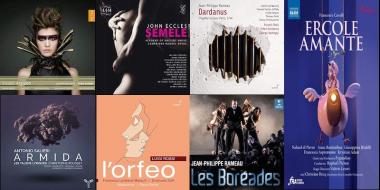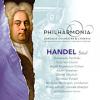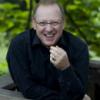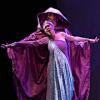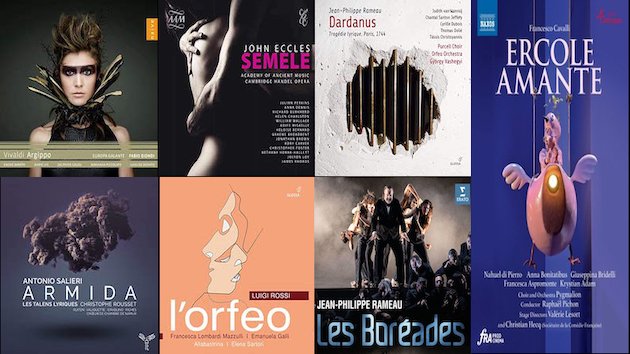
Authentic instrument recordings of Baroque opera are nothing new; they’ve been coming at a fairly steady pace for decades. What is both new and newsworthy is the plethora of recordings of overlooked and forgotten Baroque operas whose excellence deserves attention.
In these past months, for example, we’ve seen recordings of:
• John Eccles’s Semele (1706), which rather belatedly received its first performance in 1964, from the Academy of Ancient Music under Julian Perkins and the Cambridge Handel Opera Company (AAM).
• The world premiere recording of Antonio Salieri’s Armida (1771) from Les Talens Lyriques under Christophe Rousset (Aparté).
• The 2019 critical edition of Vivaldi’s Argippo (1730‑various revisions performed through 1753), a pastiche opera with arias by Pescetti, Hasse, Porpora, Galeazzi, Fiorè, Vinci, and Vivaldi performed by Europa Galante under Fabio Biondi (Naïve).
•Jean Philippe Rameau’s Dardanus (1744), a coproduction of Müpa Budapest, the Centre de musique baroque de Versailles, and the Orfeo Music Foundation, performed by the Purcell Choir and Orfeo Orchestra under György Vashegyi (Glossa).
• A soon-to-be released DVD/Blu-ray of Francesco Cavalli’s Ercole Amante (1662) performed by Pygmalion under Raphaël Pichon at L’Opéra Comique, Paris in late 2019 (Naxos/fRA Prod Cinema). Available in lower-fi and picture, with French subtitles, on YouTube.
• The first complete audio recording of Luigi Rossi’s L’Orfeo (1647), the first opera specifically composed for the French court, performed by Allabastrina under Elena Sartori. The recording was completed at the very end of 2019, shortly before the pandemic began to shut everything down (Glossa).
• Rameau’s Les Boréades, never staged in his lifetime, in a DVD (due April 2) from Le Concert D’Astrée under Emmanuelle Haïm (Erato).
To gain insight into these recordings, I turned to two of the Bay Area’s many experts on early opera, soprano Céline Ricci, whose history of performing led her to found and become executive artistic director of Ars Minerva Baroque opera company; and conductor Nicholas McGegan, music director laureate of Philharmonia Baroque Orchestra, principal guest conductor of the Pasadena Symphony and Hungary’s Capella Savaria, former artistic director and conductor at Germany’s Göttingen Handel Festival (1991-2001), principal guest conductor at Scottish Opera in the 1990s, and principal conductor of Sweden’s Drottningholm Court Theatre (1993-1996).
Ricci, whose production of Carlo Pallavicino’s Messalina (1679) is slated for Nov. 19–21, 2021, at ODC Theater San Francisco, could hardly contain her excitement at the new recordings. “For a very long time we were only recording 19th-century music and hammering it into the brains of conservatory students and audiences,” she declared by Zoom. “It was so narrow-minded.
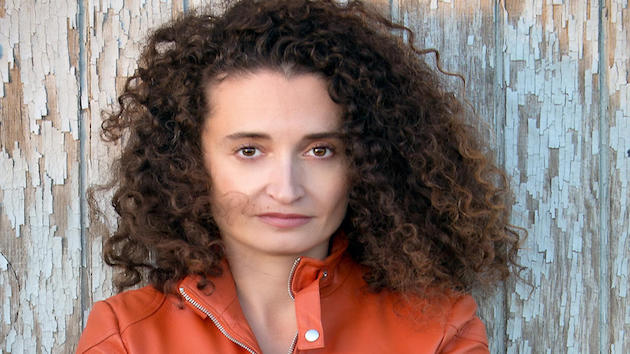
“Suddenly, we have all these sounds from previous centuries coming in. We can see opera for what it is and understand the extreme theatricality of 17th-century opera. It was really music with theater. Monteverdi, Cavalli, and all the others composing at the same period of time relied heavily on staging. Cavalli used lots of machines. People attended opera during Carnival in Venice, and it must have been a real spectacle. The King [of France] had a Salle des Machines. Opera was really incredible compared to the musique sacré that was performed in churches.”
It didn’t take Ricci long to utter those fighting words destined to upset many a recording executive. “It makes no sense to perform these in concert versions,” she declared. “A creative team and theaters are far more expensive to rent than churches, but 17th-century opera is really related to the stage. You can go rather suddenly from something that is very comic to something that’s very tragic. In that sense, it’s like a metaphor for life, because emotions alternate very fast.”
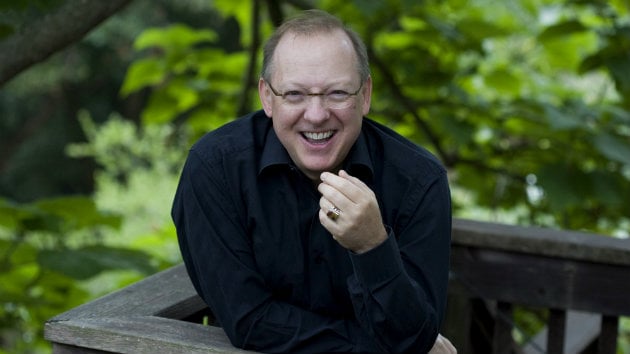
While McGegan has conducted a large number of fully staged Baroque opera productions and recorded many operas, Bay Area audiences know him mainly from PBO’s concert versions of operas, two stage collaborations with the Mark Morris Dance Company of Henry Purcell’s King Arthur and Jean-Philippe Rameau’s ballet-opera Platée, and stagings of Handel’s Julius Caesar with San Francisco Opera. He, too, acknowledges the major shortcomings of audio-only Baroque opera recordings.
“The last thing the composer expected you to do was listen to these operas,” McGegan acknowledged by Zoom. “They expected you to watch the opera, the dancing, the scene changes, and the fantastic costumes. It was a whole package of things — a union of all the arts — and all we’re getting is a CD.”
Nor does he ignore the shortcomings of his own recordings, including that of Handel’s oratorio Susanna with the late Lorraine Hunt (Lieberson), Drew Minter, and (singer) Jeffrey Thomas that won a Gramophone Award. “Operas by Rameau, Lully, and Gluck require very large orchestras and choruses,” he acknowledged. “Sometimes the orchestras on recordings are distinctly Jenny Craig compared to what would have been done at the time.
“If you perform a Paris opera that was meant for an orchestra of 60 with an orchestra of 20, it’s not going to achieve its effects. Or a chorus of 8 when we know they had a chorus of 24. Sometimes you know what’s called for, but then the economists enter the picture. You can only do what’s possible to do.
“All the Handel oratorios I’ve done are [historically] wrong because the choirs should consist of boy sopranos, not ladies and the orchestras are almost always too small. It is said that Handel had, at one point, 20 violins; I’m lucky to get 12. So maybe my recordings of Handel oratorios are not nearly as grand as they should be. And there’s not much I can do about that. I can go to the record company and ask if they’ll give me an extra $20,000, and the chances are that I’ll get the reply, ‘Do you want to make the recording or not?’ That’s the reply I’ve gotten every single time. It’s a fight to get the knowledge that you have turned into something practical.”
Given such reservations, it seems best to turn to the video of Cavalli’s Ercole Amante (Hercules in Love). All issues of correctness aside, including those of pitch — more on that later — it’s among the most delightful and superbly executed videos of Baroque opera I’ve encountered. Originally proposed as a wedding present from Cardinal Mazarin to Louis XIV on the occasion of the King’s marriage to the Infanta of Spain, Ercole Amante was intended for the Salle des Machines of the restored Tuileries Palace. Before the restoration could be completed and the opera staged, however, Mazarin died.
Louis XIV and Maria Theresa had already been married for 20 months when Lully mangled the premiere of Ercole Amante by sticking it in the middle of his own, self-aggrandizing “Grand Ballet du Roi” and soon cutting it. Nor, it seems, did the theater’s wretched acoustics, which were designed to highlight dance and theater, help. After 17 performances, Cavalli’s opera was deemed a failure and never revived in Paris until 1981. This superb period instrument performance not only restores the original prologue and five acts — the video is a bit over three hours long — but also features staging by Valérie Lesort and Christian Hecq, sets by Laurent Peduzzi, costumes and machinery by Vanessa Sannino, authentic choreographed movement by Rémi Boissy, and even puppets.
Production, singing, and musicianship are so delightful and of one piece that the video is irresistible. Bass Nahuel di Pierro (Hercules) is warm-toned and handsome; soprano Giulia Semenzato (Venus, Beauty, and Cinzia) is high-flying and lovely; mezzo Anna Bonitatibus (Juno), soprano Francesca Aspromonte (Iole), and tenor Krystian Adam (Hyllus) worth every second of your time; and veteran countertenor Dominique Visse (Lichas) equally adorable and hilarious. The staging may be as close as you’ll ever get to the Salle de Machines short of computer animation. Prepare for singers flying through air and on machines, a silly creature, and early on, the must-see emergence of Cinzia as part of a flower whose petals come to life.
Perhaps because they approach pitch from two different standpoints — singer vs. conductor — Ricci and McGegan differ on the ultimate impact of “correct” pitch on their respective endeavors. Ricci recalls singing music by Rossi at Versailles some years back where the pitch was lowered to A = 392Hz — which is, more or less, a whole-step down from modern pitch. “The colors were different,” she said. “Everything made sense in the voice and orchestra at that pitch. The sound was glossy and dark and large; you felt well in it. The entire history of opera came into perspective with that sound. It’s like understanding the birth of the universe; you understand where 19th-century opera sprang from.”
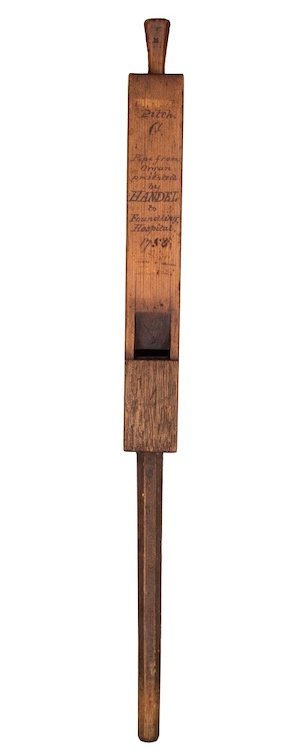
McGegan, on the other hand, finds the difference between conducting the same piece with a Baroque orchestra at one pitch and a modern orchestra at another pitch “less than you think.”
“First of all, I have a very flexible sense of pitch. If I’m doing classical music, it’s at 430, which is right in the crack between the half steps. It drives some people nuts. 415 doesn’t bother me, but it’s a totally artificial, made up pitch that’s a half-step below 440. It’s not necessarily a pitch that anyone used; it’s a convenience pitch, and simply means that you can transpose a harpsichord down a half step.”
Ironically, the only recording in our list that stipulates pitch in its liner notes is the Eccles, which is pitched at 415. But before we pooh-pooh such a choice, heed McGegan’s observation that the very notion of “correct” pitch, both past and present, is ephemeral at best.
“There is a pitch pipe that exists from Handel’s time, and the pitch seems to be A = 422Hz,” he said. “The pitch in Bach’s day varied from town to town, but from some of the wind instruments we gather that it may have been around 409, which is a bit more than a half step down. If Rome was one pitch, the other Italian towns and cities had to make sure that theirs was different. Venice was higher than Rome. French pitch in the time of Lully and Rameau was 390 or 392, which is over a step down from modern pitch. Classical pitch rose to 428 or 430, and it slowly went up. In the 19th century, it was higher than it is now except for Vienna and Berlin, which [still] play high.”
Nor are matters settled in century 21. “I took the Swedish Chamber Orchestra on tour with Mozart’s Piano Concerto No. 21. In Sweden, we played at 440. But in Germany, the further south we got, the higher the pitch got, and when we got to Bavaria, it was 446. The oboists started to make reeds because their eyebrows turned up into the divine region. They had to put metal staples on their reeds to make them shorter. All the tunings went out.”
Matters of pitch aside, take a listen to how right these recordings sound. Eccles’s Semele may favor pretty little tunes over emotional specificity — comparing how Eccles and Handel set the same texts will deepen your appreciation for Handel’s genius — but the execution of Rameau’s Dardanus is lovely and graceful, and gifts us with sections that haven’t been heard for 250 years.
That so many of these recordings sound so wonderful is reassuring, because that has not always been the case. “I don’t like to say this, but a lot of the operas that were written for Paris and Vienna were written for the great stars of the day,” McGegan noted. “Now, some of these are recorded by singers who, dare I say, aren’t quite as experienced as you’d like. An opera that was written for the likes of Lorraine is not going to sound the same if it’s being sung by somebody [who lacks] the same great vocal personality that she had. All of Handel’s singers were extremely obstreperous and must have been incredibly good for the public to have treated them as rock stars.
“In all ages there have been good singers and not-so-good singers. There have also been singers for all sorts of different functions. A diva at the opera and a male singer in the chapelle royale or in Bach’s choir had very different kinds of voices. The latter would have been more of a blending type of voice for singing in harmony.
“There’s an interesting singing treatise by Domenico Corri called The Singer’s Preceptor (1810 or 1811) that lists the things one must have in order to be a good singer:
- A messa di voce (the ability to swell and diminish)
- A perfect trill
- A full understanding of harmony and counterpoint so as to be able to improvise your ornaments
I don’t think those are the top three things that are taught now.”
Baroque singers sang with vibrato and understood how to use it for expressive purposes. You can hear examples of that on these new recordings, where so many artists are doing far more than merely singing their notes. Which is not to say that they all present object lessons in “correct” ornamentation. Composers may have expected ornamentation in Baroque performance, but it is sometimes intentionally understated in recording. Take it from McGegan:
When I first started recording, people said, ‘Oh, we mustn’t put too many ornaments on the recording; it will get annoying.’ So, recordings tend to be slightly under-ornamented, because ornaments are a way to get the audience in the palm of your hand. Rubato is another of these things that people are afraid of. My wonderful mentor/ colleague Roger Norrington hates rubato, but he doesn’t like portamento either. And we know that they [Baroque musicians] used it.”
When all is said and done (as if anything is said and done, especially in our age of alternate realities), let us rejoice in the blessings that modern technology provides us in the midst of pandemic-necessitated isolation and enjoy the music. Luxuriate in these singers’ perfect trills, and in the expressive recitative that distinguishes performance after performance. In Vivaldi’s marvelous Argippo pastiche, don’t miss the star turns by soprano Emoke Baráth and mezzo Delphine Galou. Cecilia Bartoli’s breathtakingly beautiful rendition of “Se lento ancore il fulmine” from Argippo on her Antonio Vivaldi album may be unsurpassable, but Galou’s remarkably accurate, furious, and urgent showpiece “Io son real dell’onor mio” leaves countertenor Max Emanuel Cencic’s version from his Venezia recital in the dust. This singing is so alive that it creates theatrical images all its own.

